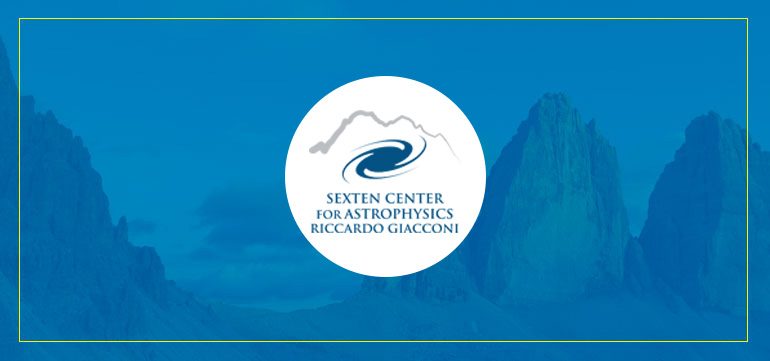
The dark side of the Universe: dark matter from small to large scales
admin0
likes
1,048 view
LOCATION: Sport & Kurhotel at Bad Moos - Via Val Fiscalina 27, 39030, Sexten
DETAILS
The proposed workshop seeks to delve into a fundamental constituent of the Universe, dark matter (DM). The main goal of this workshop is to present the state-of-the-art in our current understanding of DM as well as to discuss future lines of research. The nature of DM plays a crucial role in Physics and has been identified as one of the key questions in science. The very existence of DM either implies that the current Standard Particle Physics model is incomplete, or is a manifestation of a break down of General Relativity in low-gravity regimes. Given the relevance of DM in such diverse areas of Physics, this workshop seeks to cover several facets of this research topic. We will bring together (i) astronomers that seek to uncover the properties of DM on a range of cosmological and galactic scales, (ii) theorists that simulate the formation of DM structures and its interplay with baryonic matter and (iii) particle physicists that aim to detect DM particles (either directly or indirectly) using astrophysical sources.
In our current cosmological paradigm baryons (i.e. ordinary matter) only contribute to 4.5% of the Universe density, while the remainder 95% corresponds to non-baryonic “dark matter” (~24%) and “dark energy” (~71%).
Astrophysical observations have already excluded the possibility that the dominant form of dark matter may be in the form of the “hot” particles within the Standard Model of particle physics. While this has revealed the exciting need for new physics beyond the Standard Model, it is heavily discussed which, if any, of the current particle candidates for cold/warm dark matter (e.g. weakly interacting massive particles,
axions, sterile neutrinos, light gravitinos … etc) may correspond to the dominant form of dark matter.
A wealth of experiments for directand indirect detections of dark matter particles are underway. However, at present the evidence for dark matter (based on the validity of General Relativity on all gravitational acceleration regimes) is provided by astrophysical observations, from the smallest galactic scales of dwarf galaxies to the largest structures.
Potentially, astrophysical observations can place constraints on the mass and cross section of dark matter particles, tying astrophysics and particle physics together in the quest for understanding the nature of DM. Simulations of structure formation show that the microscopic properties of DM strongly influence the growth of structures on all scales. In the last few years strong efforts have been dedicated to test theoretical predictions against astrophysical data.
An essential (and uncertain) theoretical ingredient corresponds to the role played by baryons in shaping the present properties of DM haloes, as physical processes such as adiabatic contraction and Supernova feedback may under certain conditions alter the distribution of DM within galaxies. On the other hand, major efforts are currently dedicated to developing new, more accurate, mass modelling techniques in order to infer the properties of DM haloes on a large range of galactic scales.
RELATED FILES
No files available yet.
FEE
To be defined
WORKSHOP CODE FOR PAYMENT
ORGANIZERS
Giuseppina Battaglia (INAF - Astronomical Observatory of Bologna) Jorge Penarrubia (Institute for Astronomy, Edinburgh)
